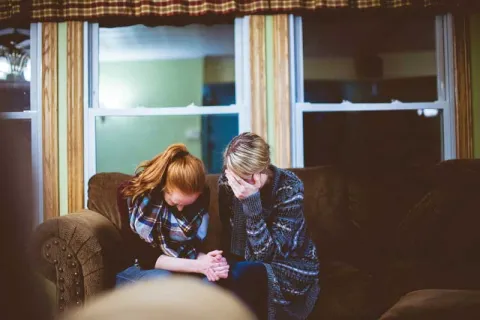Help! My kid won’t use a public restroom
By Terry Katz, PhDToday’s answer comes from psychologist Terry Katz, Ph.D., of Autism Speaks Autism Treatment Network (ATN) clinic at the University of Colorado-Denver School of Medicine and Children’s Hospital.
My son used to use public restrooms but now screams bloody murder if we even try. Any suggestions?
This is a great question because many of our families struggle with this issue. Since your son used to go to the restroom in public places without difficulty, think about what has changed. Is he having a problem with how something looks, sounds, feels or smells in a public restroom? Maybe he’s disturbed by the sound of a flushing toilet or a hand dryer. Maybe the feel of the toilet paper or the coldness of the sink water bothers him. Is he afraid of automatic faucets or toilets? Maybe he is worried about using a urinal or using a stall that needs to be locked. Is he worried about how many people are in the bathroom? Does he need more privacy? Has someone said something that created a new fear? If you can find out what is troubling him, you will have taken the first step in helping him resume using a public restroom.
What if you can’t figure out what caused the change? Then, I suggest starting from the beginning to teach this skill.
Helping autistic children get over a fear of public restrooms
Below are some helpful steps. Remember that your child may need to practice each step several times before he’s ready to move onto the next step. It will help if both of you can stay relaxed about the process. So don’t rush or exert undue pressure. Prepare for the process to take time and consider using visual aids, social stories and rewards to help him master each step.
- Start by pointing out public restrooms you encounter. Don’t go in to the restroom yet. Just talk about the restroom signs, perhaps how they differ and what they have in common. Find some safe looking pictures of public restrooms on the Internet, and show them to him.
- Next, select a public restroom for a trial “entrance.” Begin by scoping out the restroom on your own. Consider what your child might find disturbing and develop a plan. For instance, you might take some pictures of the restroom and use them in a social story. If the noises from flushing toilets or hand dryers are likely to upset your child, consider allowing him to wear noise-blocking head phones. It might even help to let him listen to a favorite song on the headphones. Similarly if the lights bother him, you can provide sunglasses. It might also help to provide a comfort object that can fit in his pocket or a backpack.
- For the trial entrance, let your son know that he doesn’t have to actually use the toilet. He can walk into the restroom and turn right around to leave if he wants. Offer to go in with him. If he still has trouble, think about what else you can do to increase his comfort.
- Next have your son learn to wash his hands in the public restroom. He will go into the restroom, wash his hands and leave. If using the sink or dryer is hard for him, give him disposable hand wipes that he can practice using at home. This step can be practiced at different public restrooms. But once again, you may need to visit these restrooms on your own so that you can help prepare him for success in new and different situations.
- Next have your son practice standing in a stall or near a urinal. He doesn’t have to actually urinate. If necessary, start briefly and increase the time he does this over a series of visits.
- The next step is to practice actually urinating in a public toilet. Some children are afraid of the sound of a flushing toilet or worry that the toilet will flush while they are still near it. If the toilet flushes automatically, try covering the sensor while your child is in the stall. As always, think about what you can use to help your child feel more comfortable. If he doesn’t like the feel of the toilet paper, have him use wipes or tissues. (Wipes, tissues, headphones and comfort items can all be kept in a small backpack.) If this step is disturbing for your child, don’t insist on washing hands inside the restroom afterward.
- If you have been accompanying your child and want him to use the restroom on his own, patiently help him work through each of the above steps solo.
- When your child is ready to use public restrooms on his own, remember to go over the unspoken rules.








